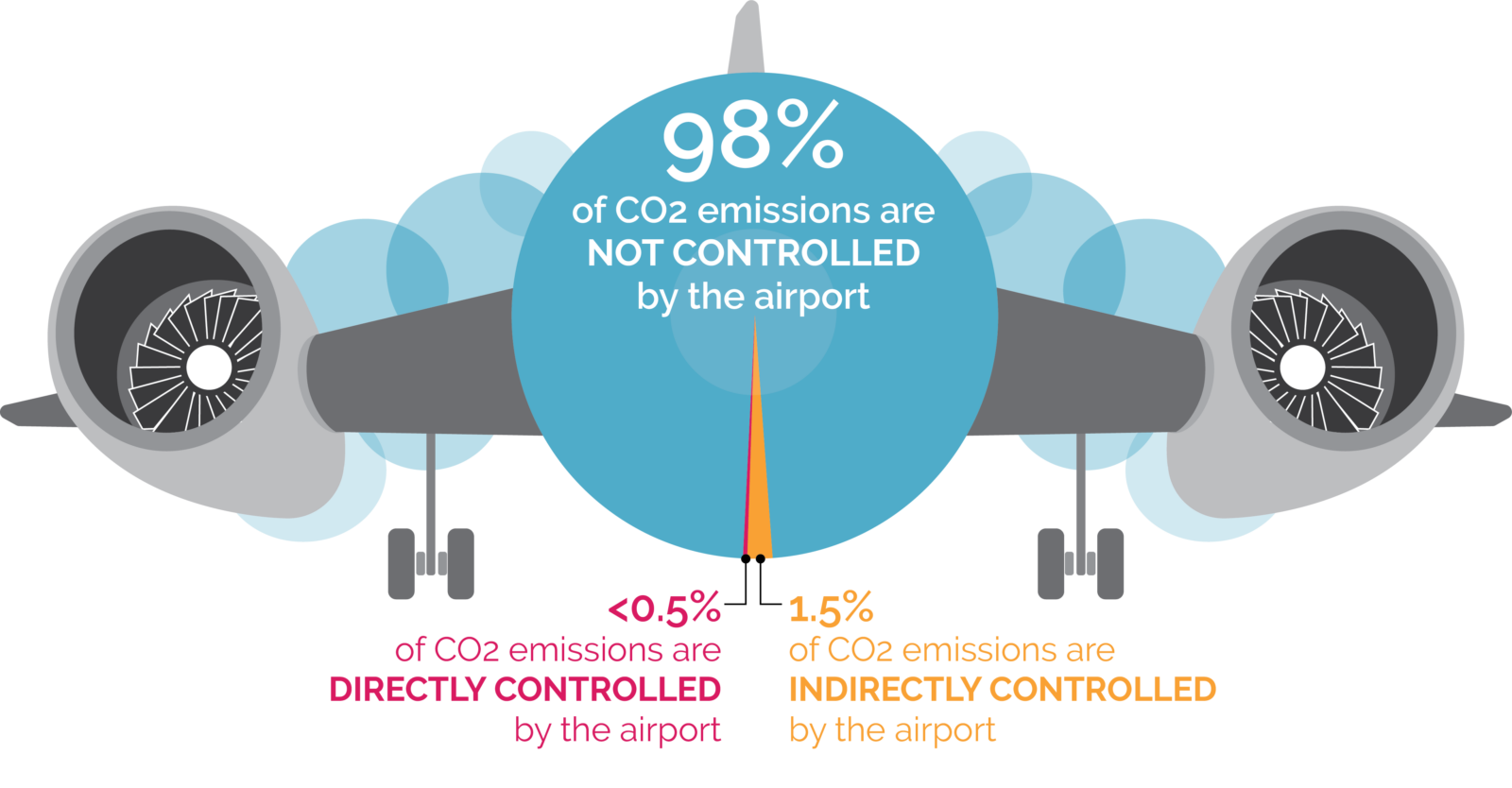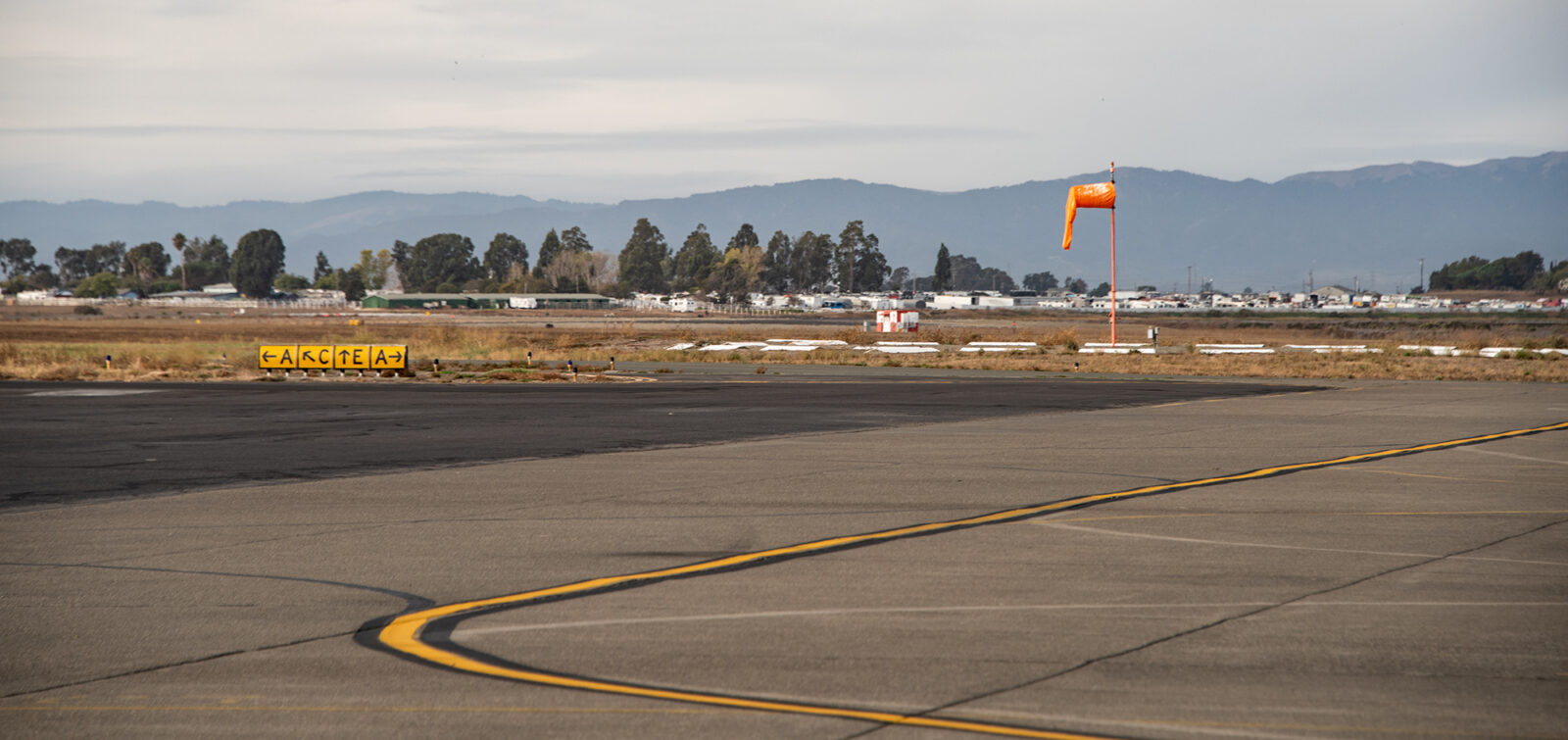Most of us in the aviation industry are aware of the US Department of Transportation’s 2021 Aviation Climate Action Plan, which provides a roadmap for airport and airline operators to achieve “net zero” greenhouse gas (GHG) emissions by 2050. But how many of us understand what net zero really means and how we get there?
Understanding GHG Emissions and the Aviation Industry
To get to the bottom of these questions, it’s helpful to first understand the relationship between GHG emissions and the aviation industry. In the context of aviation, GHGs, which are key drivers of climate change, include carbon dioxide (CO2), methane, and nitrous oxide. For purposes of our discussion, we’ll focus on CO2 (commonly referred to as just “carbon”), as it is the overwhelming by-product of fossil fuel combustion. The aviation sector typically accounts for about 3 percent of all carbon emissions in the US each year, which is remarkable, given the intense growth in activity over the past two decades.
Aviation-related carbon emissions are generally classified by the ability of an airport operator to control them. Scope 1 emissions, which account for less than 0.5 percent of total carbon emissions, are those that are directly controlled by an airport (e.g., central utility plant); Scope 2 emissions, which account for about 1.5 percent of total emissions, are those that are indirectly controlled by an airport (e.g., off-airport power plant); and Scope 3 emissions, which account for the remaining 98 percent are those that are not controlled, but may be influenced, by an airport (e.g., aircraft engines).

So, airport operators can practically only reduce less than 2 percent of all aviation-related carbon emissions? Yes and no.
Because FAA net zero requires an organization to also include their value chain emissions (e.g., product life cycle), getting all the way down to zero can be quite challenging. A word of caution for organizations considering purchasing offsets: carbon offsetting has recently come under scrutiny for dubious accounting, including duplicative, or not counting any, emission offsets.
Fortunately, help has already arrived, as there are currently dozens of different types of GHG-reducing projects at airports across the country. While there’s not enough space here to describe all of them, it’s important to note that many of these projects utilize technologies that can reduce emissions across multiple sectors of control. For example, the use of on-airport renewables (e.g., solar) can help an airport reduce its own emissions (Scope 1), reduce reliance on grid-supplied electricity (Scope 2), and provide clean power for tenants (Scope 3). Additionally, many of these projects are not that costly to implement. For example, integrating net zero principles into design/construction guidelines and procurement policies and implementing ride-sharing programs are extremely cost-effective. Finally, even for big-ticket projects, such as on-site renewables and high-efficiency HVAC systems, the payback period is quicker than most realize, especially when the cost of doing nothing is factored into the equation.
But it’s not all butterflies and unicorns. There’s still the proverbial 600-pound gorilla in the room—the emissions associated with tens of billions of gallons of jet fuel consumed each year. While the engine compatibility problems with sustainable aviation fuel have generally been figured out, economically scaling up production remains a huge challenge, as are the upstream availability of fuel “feedstock” and the associated environmental, social, and political impacts. One recent study predicts that only about 10 percent of all jet fuel available for use in the European Union in 2030 will be considered sustainable.
While some very smart people find solutions to these problems, a more pressing hurdle you, as the airport operator, may need to overcome is the need to effectively sell your idea on how to reduce our carbon footprint. There’s no shortage of good ideas, nor is there a shortage of capable consultants and airport staff to come up with the solutions that work best for you, but there’s a graveyard full of innovative projects that failed to gain consensus.

“Getting to net zero isn’t cheap, but, if carefully planned out with key stakeholders in your organization, carbon reduction projects have a surprisingly favorable payback period, especially when compared to the cost of doing nothing. “
Neal Wolfe, ESA Airports Principal Associate
When airport staff and consultants fail to convince key stakeholders by not speaking their language, the project is most likely doomed. Because the most common airport language, aside from regulatory “musts,” is money, every project discussion should be focused on the financial bottom line, whether it’s the payback period, expected return on investment, or even the cost of doing nothing. Stakeholder relationships are also a critical hurdle to negotiate, but even with these, the relationship quite often boils down to understanding the perspectives associated with various financial planning expectations. Remember the 98 percent of emissions over which you have no direct control (Scope 3)? That’s where developing meaningful partnerships with your tenants and other airport users comes into play!
Rolling out a net zero plan isn’t easy, but there are some fantastic resources available to help get you started, including the Airport Carbon Accreditation Program. And getting to net zero isn’t cheap, but, if carefully planned out with key stakeholders in your organization, carbon reduction projects have a surprisingly favorable payback period, especially when compared to the cost of doing nothing. Many net zero projects not only reduce carbon emissions, but they may also enhance organizational resilience and reduce vulnerabilities associated with the impacts from climate change and other extreme shock events.
Both of these facts underscore the importance of effectively selling your idea to the decision-makers, which is something you will likely have to do it throughout your net zero journey—from determining your baseline carbon footprint all the way to project implementation and progress reporting and tracking.
Feeling a bit overwhelmed about where to start or intimidated by having to sell your ideas? Not to worry, our experts at ESA, including Neal Wolfe, Jeff Covert, and Jeff Caton, LEED AP, collectively have decades of experience in helping clients reduce their carbon emissions or putting them on a path to net zero in a way that is sustainable, resilient, and financially sound. If you need assistance getting a program off the ground, ESA has the experience and knowledge to help your organization do their part in the battle against climate change.







